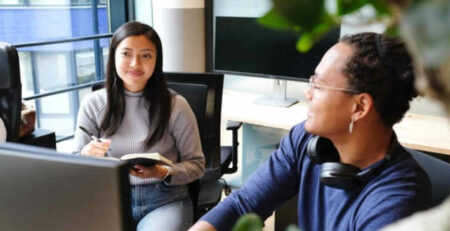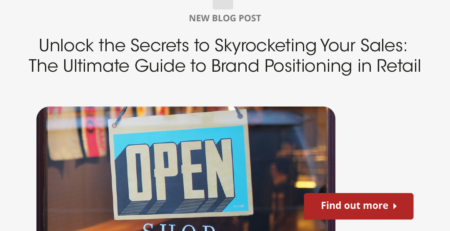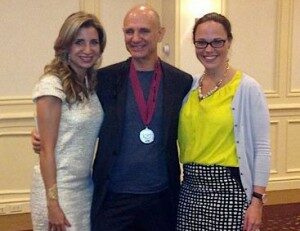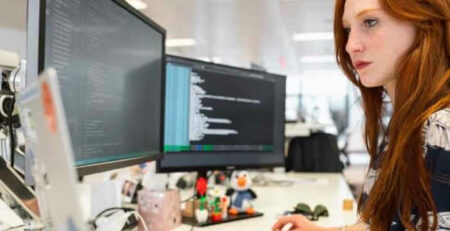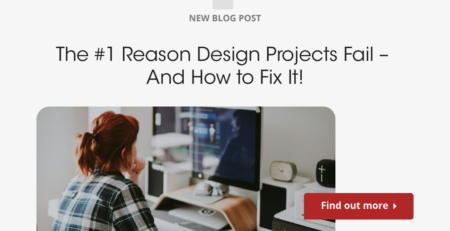The Ultimate Guide to Hiring Graphic Designers: Boost Your Creative Team Now
In today’s fast-paced digital world, the demand for creative content has skyrocketed, making the role of graphic designers more crucial than ever. Whether it’s for branding, advertising, web design, or product packaging, graphic designers bring ideas to life, communicate messages visually, and engage audiences. As such, building a strong creative team with talented graphic designers is a strategic move for any business looking to stand out. This ultimate guide aims to navigate you through the process of hiring graphic designers, ensuring that you boost your creative team with the right talent.
Understanding the importance of graphic design in today’s business landscape is the first step. Graphic design is not just about making things look pretty; it’s about effective communication and problem-solving through visuals. It plays a significant role in building brand identity, improving user experiences, and driving conversions. Therefore, hiring skilled graphic designers is not just an addition to your team; it’s an investment in your company’s future.
However, the process of hiring graphic designers can be daunting. From identifying your design needs to finding the right candidates, conducting interviews, and making the final decision, each step requires careful consideration. This guide will provide you with insights and practical tips to streamline the hiring process, ensuring you find candidates who are not only talented but also a great fit for your company culture.
We’ll explore the most asked questions by employers looking to hire graphic designers, such as where to find top talent, what skills and qualifications to look for, how to assess a graphic designer’s portfolio, and more. By addressing these questions, we aim to equip you with the knowledge and tools needed to make informed hiring decisions.
Moreover, we’ll delve into the significance of fostering a creative environment that encourages innovation and collaboration among your design team. Hiring the right graphic designers is just the beginning; creating a workspace that allows them to thrive is equally important for sustaining creativity and productivity.
In addition to traditional hiring methods, we’ll also discuss the benefits of outsourcing and working with freelancers. In some cases, outsourcing graphic design tasks or hiring freelance designers can provide flexibility and access to a wider talent pool. We’ll examine when and why this approach might be beneficial for your business.
Furthermore, we’ll touch upon the latest trends in graphic design and how staying updated with these trends can help you attract and retain top talent. The graphic design industry is constantly evolving, and designers who are passionate about their craft are always looking to work on projects that allow them to explore new ideas and technologies.
Lastly, we’ll provide resources and recommendations for further reading, including websites, blogs, and online communities where you can learn more about graphic design and connect with professional designers. Whether you’re a startup looking to build your creative team from scratch or an established company aiming to expand your design capabilities, this guide is designed to assist you every step of the way.
By the end of this guide, you’ll have a comprehensive understanding of how to hire graphic designers effectively, ensuring your business stays competitive and visually compelling in the digital age. Let’s dive in and explore how you can boost your creative team now.
Where Can I Find Top Graphic Design Talent?
Finding top graphic design talent requires a strategic approach, as the best designers are often in high demand. The first step is to identify the specific skills and experience needed for your projects. Once you have a clear understanding of your requirements, you can begin your search through various channels.
Online job boards such as Indeed, Glassdoor, and LinkedIn are great places to start. These platforms allow you to post job listings and reach a wide audience of professionals. Additionally, specialized design job boards like Behance, Dribbble, and AIGA Design Jobs cater specifically to the creative community, attracting highly skilled designers.
Networking is another effective way to find graphic design talent. Attend industry conferences, workshops, and meetups to connect with designers and other professionals in the creative field. Leveraging your professional network can also lead to valuable referrals.
Social media platforms, particularly Instagram and Pinterest, are excellent resources for discovering talented designers. Many graphic designers showcase their work on these platforms, giving you the opportunity to assess their style and creativity directly.
Working with creative staffing agencies that specialize in this roles can also streamline the hiring process. Agencies like icreatives staffing have a vetted pool of graphic designers and can match you with candidates that fit your specific needs. Learn more about using a staffing agency here.
Don’t overlook the power of design competitions and awards. Participating in or sponsoring these events can put you in touch with up-and-coming talent and established designers alike.
Consider reaching out to design schools and universities. Many institutions have career services that can connect you with recent graduates who are eager to start their careers.
Lastly, creating an attractive job listing that highlights the benefits of working for your company can help draw in top talent. Be clear about the role, responsibilities, and the creative opportunities your projects offer.
Remember, finding the right graphic designer is about more than just skill; it’s about finding someone whose style, work ethic, and personality fit well with your team and company culture.
By exploring these avenues and being proactive in your search, you can increase your chances of finding top graphic design talent that will help elevate your creative projects.
What Skills and Qualifications Should I Look for in a Graphic Designer?
When hiring a graphic designer, it’s essential to look for a combination of technical skills, creative abilities, and soft skills. A well-rounded candidate will not only be proficient in design software but also possess a strong creative vision and the ability to communicate effectively.
Technical skills are the foundation of a graphic designer’s toolkit. Proficiency in Adobe Creative Suite (Photoshop, Illustrator, InDesign) is a must. Familiarity with other design software and technologies, such as Sketch, Figma, or Adobe XD, is also valuable, especially for web and app design projects.
Creative abilities are what set great designers apart. Look for a strong portfolio that showcases a variety of projects, including branding, web design, print materials, and more. A good designer should demonstrate versatility, a keen eye for aesthetics, and the ability to create visually appealing and effective designs.
Soft skills are equally important. Communication skills are crucial for understanding project requirements and providing updates. Problem-solving abilities and critical thinking are necessary for overcoming design challenges. Additionally, time management and the ability to work under pressure are essential in fast-paced environments.
Understanding of marketing principles and user experience (UX) design can greatly enhance a graphic designer’s effectiveness. Designers who can create visually appealing designs that also drive conversions and enhance user engagement bring added value to any project.
Educational background in graphic design or a related field is commonly sought after, but it’s not the only indicator of a great designer. Many talented designers are self-taught or have gained their skills through online courses and practical experience.
When assessing qualifications, consider the candidate’s willingness to learn and adapt. The design industry is constantly evolving, and designers who are passionate about staying updated with the latest trends and technologies are more likely to contribute innovative ideas to your projects.
During the interview process, ask questions that reveal the candidate’s thought process, creativity, and problem-solving approach. This can provide insights into how they will handle real-world design challenges.
Finally, cultural fit is an aspect that should not be overlooked. A designer who aligns with your company’s values and works well with your team will be more productive and contribute to a positive work environment.
By focusing on these skills and qualifications, you can identify candidates who are not only talented but also well-suited to meet the specific needs of your projects and company culture.
How Do I Assess a Graphic Designer’s Portfolio?
Assessing a graphic designer’s portfolio is a critical step in the hiring process. A portfolio provides a visual representation of the designer’s skills, style, and experience. Here are key aspects to consider when evaluating a portfolio.
First, look for diversity in the portfolio. A versatile designer will have experience with a range of projects, including branding, web design, print materials, and digital content. This demonstrates adaptability and the ability to tackle various design challenges.
Pay attention to the quality of the work. Look for clean, professional designs that effectively communicate the intended message. Good design is not just about aesthetics; it’s about solving problems and achieving objectives. Assess how well the designer uses color, typography, layout, and imagery to create cohesive and impactful designs.
Consider the designer’s creative process. Many designers include case studies or project descriptions that outline their approach to a project, from initial concepts to final execution. This can give you insight into their problem-solving skills, creativity, and attention to detail.
Look for evidence of results. Designers who can demonstrate the effectiveness of their designs through metrics, such as increased website traffic or improved conversion rates, bring added value. This shows that they understand the business impact of their work.
Assess the designer’s ability to stay current with design trends and technologies. A portfolio that includes modern design styles and techniques indicates a designer who is committed to continuous learning and improvement.
Consider the presentation of the portfolio itself. A well-organized, easy-to-navigate portfolio reflects professionalism and attention to detail. It also shows that the designer values user experience, an important aspect in many design projects.
Don’t hesitate to ask the designer about specific projects in their portfolio. This can provide deeper insights into their role in the project, the challenges they faced, and how they contributed to the project’s success.
For web and digital design projects, assess the functionality and user experience of the portfolio website or digital content. This can give you an idea of the designer’s UX design skills and technical proficiency.
Finally, consider how the designer’s style aligns with your brand and project needs. While versatility is important, a designer whose aesthetic sense matches your vision can lead to more cohesive and effective designs.
By thoroughly assessing a graphic designer’s portfolio, you can gain a comprehensive understanding of their capabilities, ensuring you make an informed hiring decision.
What Interview Questions Should I Ask a Graphic Designer?
Interviewing a graphic designer is an opportunity to delve deeper into their skills, experience, and fit for your team. Here are essential questions to ask during the interview process.
1. Can you walk me through your design process? This question helps you understand how the designer approaches projects, from initial research to final execution. Look for a structured process that includes understanding the project goals, researching, sketching, prototyping, and feedback.
2. How do you stay updated with the latest design trends and technologies? A designer who is passionate about their craft will actively seek out new ideas, tools, and techniques. This shows a commitment to continuous learning and improvement.
3. Can you provide an example of a challenging project you worked on and how you overcame the challenges? This question reveals the designer’s problem-solving skills and resilience. It also provides insights into their ability to work under pressure and adapt to unforeseen issues.
4. How do you measure the success of your designs? Look for answers that go beyond aesthetics, focusing on user engagement, conversion rates, or other metrics that demonstrate the design’s effectiveness in achieving business objectives.
5. How do you handle feedback and revisions from clients or team members? The ability to receive and incorporate feedback is crucial for a collaborative work environment. It shows the designer’s professionalism and focus on achieving the best possible outcome.
6. What design project are you most proud of and why? This question allows the designer to highlight their best work and explain what makes it successful. It also gives you insight into their values and what they consider important in design.
7. How do you balance creativity with practicality in your designs? Effective designers can create visually appealing designs that also meet practical constraints, such as budget, timelines, and technical requirements.
8. Can you describe a time when you had to work on a tight deadline? This question assesses the designer’s time management skills and ability to deliver quality work under pressure.
9. How do you collaborate with other team members, such as developers, marketers, and content creators? Look for a team player who can effectively communicate and work with cross-functional teams to achieve project goals.
10. What do you hope to achieve in your career as a graphic designer? This question helps you understand the designer’s aspirations and whether they align with the opportunities your company can offer.
By asking these questions, you can gain a deeper understanding of the candidate’s skills, experience, and suitability for your team, helping you make an informed hiring decision.
How Can I Create a Work Environment That Fosters Creativity Among Graphic Designers?
Cultivating a work environment that fosters creativity is essential for keeping your graphic design team motivated and productive. Here are strategies to create a conducive creative workspace.
1. Encourage open communication and collaboration. A culture of openness allows designers to share ideas, seek feedback, and collaborate on projects. This can lead to more innovative solutions and a sense of camaraderie among team members.
2. Provide access to the latest tools and resources. Equipping your team with up-to-date software, hardware, and design resources enables them to explore new ideas and techniques, enhancing their creative output.
3. Offer opportunities for professional development. Workshops, conferences, and online courses can help designers stay updated with the latest trends and technologies, fostering continuous learning and growth.
4. Recognize and reward creativity. Acknowledging and celebrating creative achievements can motivate designers to push their boundaries and strive for excellence. Learn more about recognizing employees here.
5. Create a comfortable and inspiring physical workspace. A well-designed office space with areas for collaboration, relaxation, and individual work can stimulate creativity and improve productivity.
6. Allow flexibility in work schedules. Providing flexibility in work hours or the option to work remotely can help designers find their most creative times and balance work with personal life, leading to higher job satisfaction.
7. Encourage side projects and personal exploration. Allowing designers to work on personal projects or explore new creative interests can lead to fresh ideas and innovations that benefit the company.
8. Foster a culture of experimentation. Encouraging designers to experiment and take risks, even if it means making mistakes, can lead to breakthrough ideas and a more dynamic creative process.
9. Promote psychological safety. A work environment where designers feel safe to express their ideas without fear of judgment or failure is crucial for fostering creativity. Learn more about psychological safety here.
10. Support work-life balance. Ensuring that designers have time to recharge and pursue interests outside of work can prevent burnout and keep creativity flowing.
By implementing these strategies, you can create a work environment that not only attracts top graphic design talent but also supports their creativity and well-being, leading to a more innovative and productive team.
Should I Consider Outsourcing Graphic Design Tasks or Hiring Freelancers?
Outsourcing graphic design tasks or hiring freelancers can offer flexibility and access to a diverse talent pool. Here are factors to consider when deciding whether this approach is right for your business.
1. Project scope and duration. For short-term projects or specific tasks that don’t require a full-time designer, outsourcing or hiring freelancers can be a cost-effective solution.
2. Access to specialized skills. Freelancers and outsourcing agencies often have designers with specialized skills or experience in certain industries, allowing you to find the perfect fit for your project needs.
3. Budget considerations. Outsourcing can be more budget-friendly, as you only pay for the work needed without the overhead costs associated with full-time employees, such as benefits and office space.
4. Flexibility and scalability. Hiring freelancers allows you to scale your design team up or down based on project demands, providing greater flexibility in managing workload and resources.
5. Time constraints. Freelancers can often start on projects immediately, helping you meet tight deadlines without overburdening your in-house team.
6. Geographic diversity. Outsourcing can give you access to talent from around the world, bringing diverse perspectives and ideas to your projects.
7. Quality control. While outsourcing offers many benefits, maintaining consistent quality can be challenging. It’s important to carefully vet freelancers or agencies and establish clear communication and quality standards.
8. Intellectual property and confidentiality. Ensure that contracts with freelancers or outsourcing agencies include clauses to protect your intellectual property and confidential information.
9. Long-term relationships. Building long-term relationships with freelancers or agencies can lead to better understanding of your brand and more efficient collaboration on future projects.
10. Integration with your team. Consider how freelancers or outsourced designers will integrate with your in-house team and processes to ensure smooth collaboration and project management.
Outsourcing graphic design tasks or hiring freelancers can be a strategic move for businesses looking for flexibility, specialized skills, and cost savings. By carefully considering these factors, you can determine if this approach aligns with your project needs and business goals.
How Do I Stay Updated with the Latest Graphic Design Trends to Attract Top Talent?
Keeping abreast of the latest graphic design trends is crucial for drawing in top-tier talent and ensuring your projects remain contemporary and impactful. Here’s how you can stay on the cutting edge of design. Regularly visit esteemed design blogs and websites such as HOW Design, Creative Bloq, and Designhill’s blog to immerse yourself in the latest design trends, techniques, and industry updates. These resources are treasure troves of inspiration and knowledge that can elevate your projects and make your company a magnet for creative professionals.
Participating in design conferences and webinars offers a dual benefit of learning from industry leaders while expanding your professional network. Social media platforms, especially Instagram, Twitter, and LinkedIn, serve as vibrant forums for designers to showcase their work and engage in discussions about emerging trends. Experimenting with new design tools and software can also introduce you to trendsetting features and functionalities, keeping your design practices innovative.
Encourage a culture of knowledge sharing within your team, where discoveries, new techniques, and insights about trends are openly exchanged. This not only fosters a collaborative learning environment but also ensures your team collectively stays at the forefront of design innovation. Engaging with academic institutions can provide access to cutting-edge design research and emerging talent eager to apply the latest theories in practical settings.
Subscribing to design newsletters is another effective way to receive curated content on the latest trends and case studies directly to your inbox. Keeping an eye on the design strategies of industry leaders and competitors can also offer valuable insights into what’s currently resonating in the market. Moreover, investing in your team’s continuous education and encouraging experimentation with new ideas can lead to pioneering designs that define rather than follow trends.
By actively engaging with these strategies, you position your company as a forward-thinking entity in the design world, attracting creative minds who are eager to work in an environment that values innovation and staying ahead of the curve.
Conclusion
In conclusion, hiring the right graphic designers is a multifaceted process that requires a strategic approach. From understanding where to find top talent and what skills to look for, to assessing portfolios and conducting insightful interviews, each step is crucial in building a strong creative team. Creating a work environment that fosters creativity, considering the benefits of outsourcing, and staying updated with the latest design trends are also key factors in attracting and retaining top graphic design talent.
By following the guidance provided in this ultimate guide, businesses can navigate the complexities of hiring graphic designers more effectively. Whether you’re looking to fill a permanent position, considering freelancers for project-based work, or aiming to enhance your team’s creativity and productivity, the insights shared here can help you make informed decisions that benefit your team and company as a whole.
Remember, investing in talented graphic designers is not just about enhancing your team’s capabilities; it’s about investing in your brand’s future. In the ever-evolving world of design, having a team that can deliver innovative, visually compelling content is a competitive advantage that can set your business apart. So, take the time to hire wisely, support your team’s growth, and stay ahead of industry trends to ensure your creative projects make a lasting impact.
As you embark on this journey to boost your creative team, keep exploring, learning, and adapting. The field of graphic design is constantly changing, and by embracing this dynamism, you can unlock endless possibilities for creative expression and business success.


